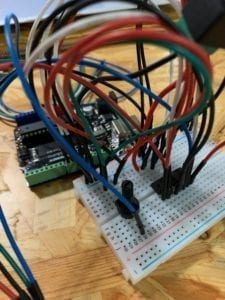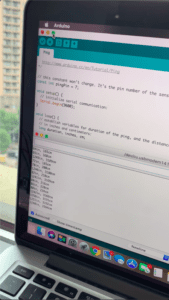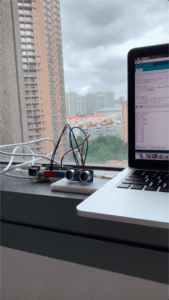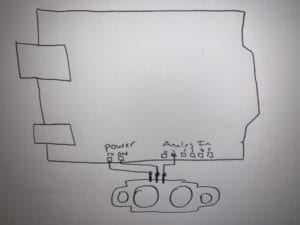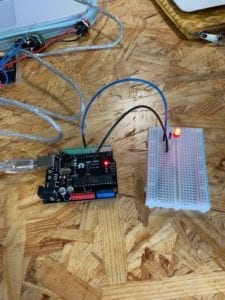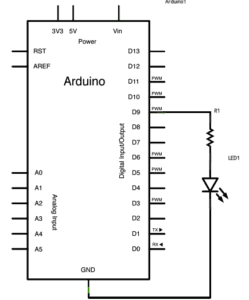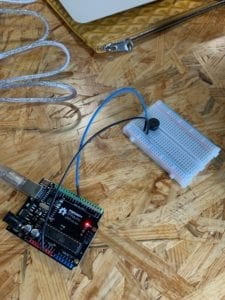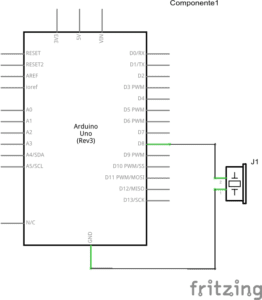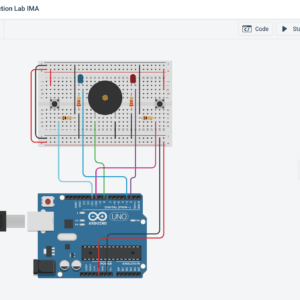For my midterm my partner and I created a product meant to interact with the everyday shopper at a mall or place of commerce and lure them in to buy the product. There are obviously hundreds of different types of advertising products, but what I wanted to expand with for mine was how the advertisement would be able to interact with the user. Instead of a sign or just showing the product, I thought it would be better for their to be audios and lights to activate the closer the person got to the product. The audio is catered specifically for the product so if any person resonates with the audio or their attention is caught by the lights then the closer they will move towards the product causing the lights to shine brighter and the audio to change to something that explains the product better. This combination of audio and lights allows for more interaction with the user since they are getting two of their senses exposed, as well as a better personal advertisement to the user.
Some of the inspiration for how to have better interaction in a certain product came from the group projects we did, and how I realized that to have better interaction between a person and an object there has to be something that draws that person into the object in the first place. It’s hard for a person to want to interact with something if there’s nothing that the person can gain or want to gain from the object. That’s why I thought that if I made an advertisement for a certain project the better it would be.
To make this project I knew that there were three elements that had to be put together to make this work, a serial mp3, an LED strip, and a proximity sensor. I also thought a motion sensor would have been a good idea but the proximity sensor allowed for more flexibility with the audio and when certain audios would play. At first I thought it would be okay to just have a box with the proximity sensor inside with the LED strip surrounding the box but after the user testing session we got a lot of feedback that the lights were too bright and that if we made a separate box that would go underneath the one with the proximity sensors it would be less harsh on the eyes and create a nice aura around the box. This was something I thought was very important, since one of the most integral parts of our project was attracting the user to interact with it, and if it was too bright then it would deter them from doing so. These elements went very well with our project because they all worked together in luring the user with a nice presentation and allowing for interaction with the lights and audio.
Though putting all of these elements together sounds simple enough, it was pretty difficult because of the amount of code we had to combine to make the three elements work together. The box itself was fairly easy to design, all it took was to measure the amount of space the wiring and proximity sensor would need. The only other thing we had to add to the project was the audios which were very easy to make. To use the LED strip and the serial mp3 we had to download the individual code for both items and put them together and code it so that they could both work together. This took the majority of the time since both codes had their own rules that we had to manipulate so that they could both work simultaneously. The biggest difficulty was with making all these elements come together, since in the end we weren’t able to correctly make the audios to the correct distance with the proximity sensor, the audio would play in a continuous if it sensed anything in front of it instead of playing different audios the closer you got. The other failure we had was with the quality of the audio from the speaker. Even though both the audio and speaker were good, for some reason there would always be a buzzing sound in the background every time we ran the code, even though it would sound fine if we played the audio separately.
The goal for our project was to create a product that could be used to provide a more interactive and personal type of advertisement. The interaction of the person moving closer to the product and it changing the closer the closer the person got allowed for a more personal take on how advertising is done. I think that if we had an ever more responsive proximity sensor and nicer design than just a box, then the goal of attracting people to look at the product would be better accomplished. Though the idea of combining all these elements seemed like a pretty mundane task, it proved that sometimes it hard to combine items to make something, especially in code. What I feel that I was able to create with this project shows how advertisements can become better with more personal and interactive elements.

